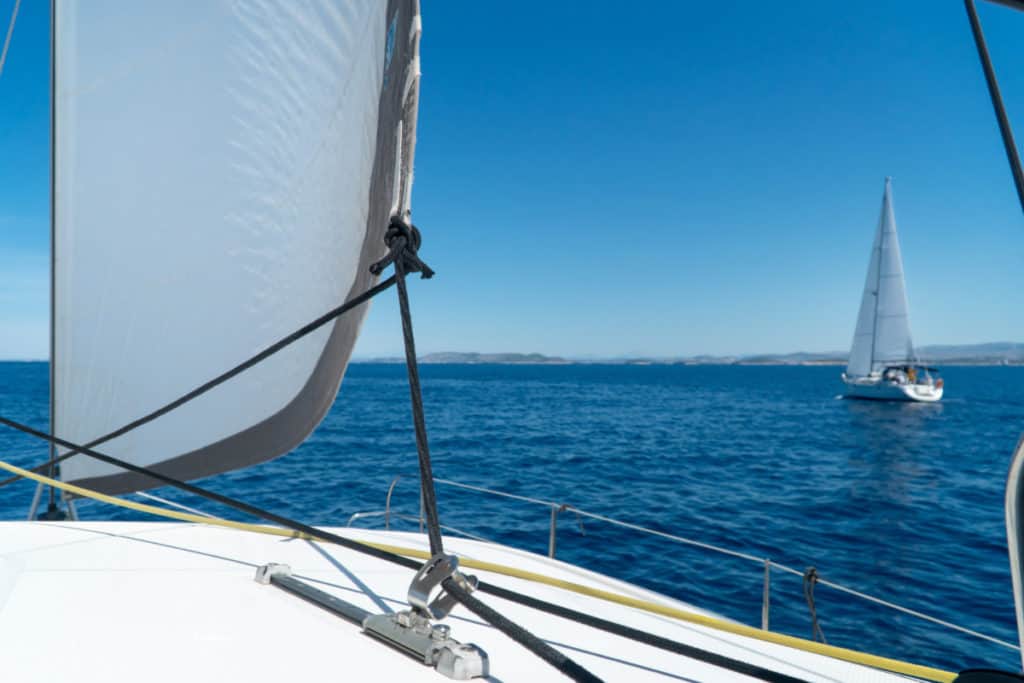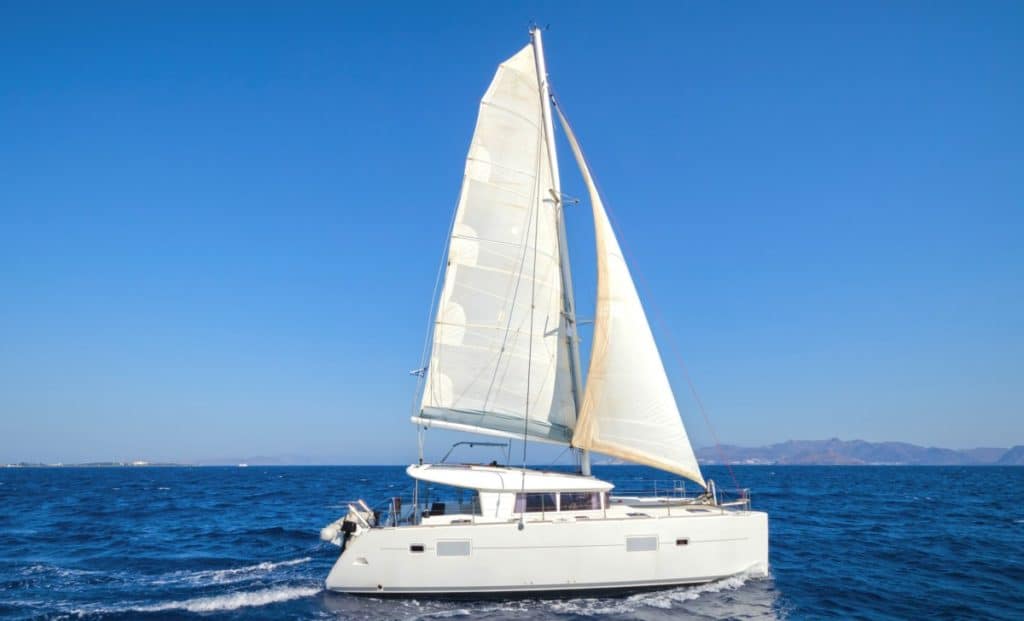As an Amazon Associate, we earn from qualifying purchases. We may also earn commissions if you purchase products from other retailers after clicking on a link from our site.
Setting off to The Bahamas I thought sailing was all about relaxing and enjoying yourself, and many times it is, but there are definitely some aspects of sailing that I wish I could trade for something better. Today’s article is dedicated to looking into what makes sailing fun and what makes it suck. Let’s start out with the boring sides.
Here are the biggest downsides to sailing:
- Sailing is expensive.
- Learning to sail is time-consuming.
- Maintenance is challenging.
- Sailing is exhausting.
In this article, I’ll explore these downsides in further detail. I’ll also cover a few other questions you may have about sailing, so you’ll have a better idea about whether this activity is right for you.

1. Sailing Is Expensive
If you’re looking to learn how to sail (which I have an article on here) rather than just go for a day trip on a commercial sailboat, you’ll first have to invest in your own boat. The price of a sailboat depends on the size and whether you’re buying it new or used, but you can expect to pay at least $20,000 for a used monohull and $50,000 for an old catamaran. Additionally, maintenance costs will set you back a couple of thousand dollars each year.
There are no two ways around it – sailing is an expensive hobby. There is a reason why some say that BOAT stands for Break Out Another Thousand (dollars that is).
To really understand what a catamaran/monohull costs I recommend you read my prices breakdown article, in this article you will find out what type of boat you will be able to afford.
And once you have figured out what boat you can afford to buy you need to understand the actual maintenance cost per year, something I discuss in this article.
These costs do not take into account other costs associated with sailing, such as sailing lessons, gear for your boat, and any one-time refurbishments you might want to make after purchasing your craft. Additionally, you’ll almost certainly have to pay to dock your sailboat at a local harbor when not in use.
If you’re looking to get into sailing, make sure you know what you’re getting into financially, I totally underestimated the costs. So read the article about maintaining a boat and you will be much better off than we were!
Go small Go NOW!

2. Learning To Sail Is Time-Consuming
Learning to sail isn’t immediate, especially if this is your first time learning how to pilot a boat of any kind. This isn’t to say it’s difficult – but it’s definitely not something you’ll be able to pick up in a single day.
How long it will take you to learn to sail depends on the goals you set, if you want to daysail during nice weather this will probably take you a week to understand the basics. But if you’re looking to do offshore ocean passages then most people don’t consider that until maybe season three or four of their sailing career.
Aside from learning how to actually steer your boat, you’ll also have to learn anchoring and docking skills. You’ll also have to learn some general skills that are essential when you’re out in the sea, such as basic knots, first aid, navigation, and emergency procedures if something goes wrong.
You definitely want to have a solid grip on your Man Over Board procedures (MOB) something we learned the hard way.

Engine maintenance is basically the same as in a car. 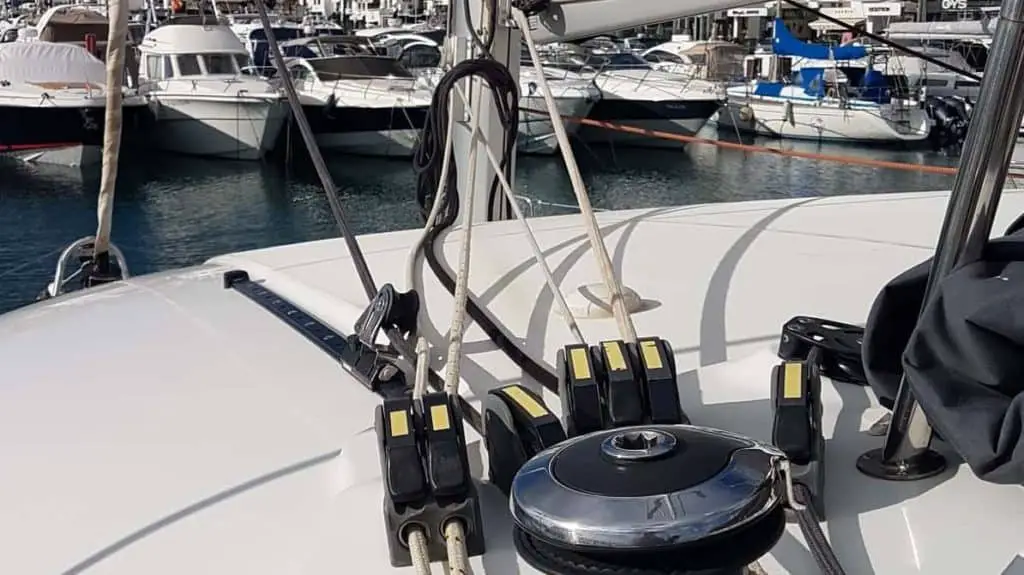
Boat specific maintenance. 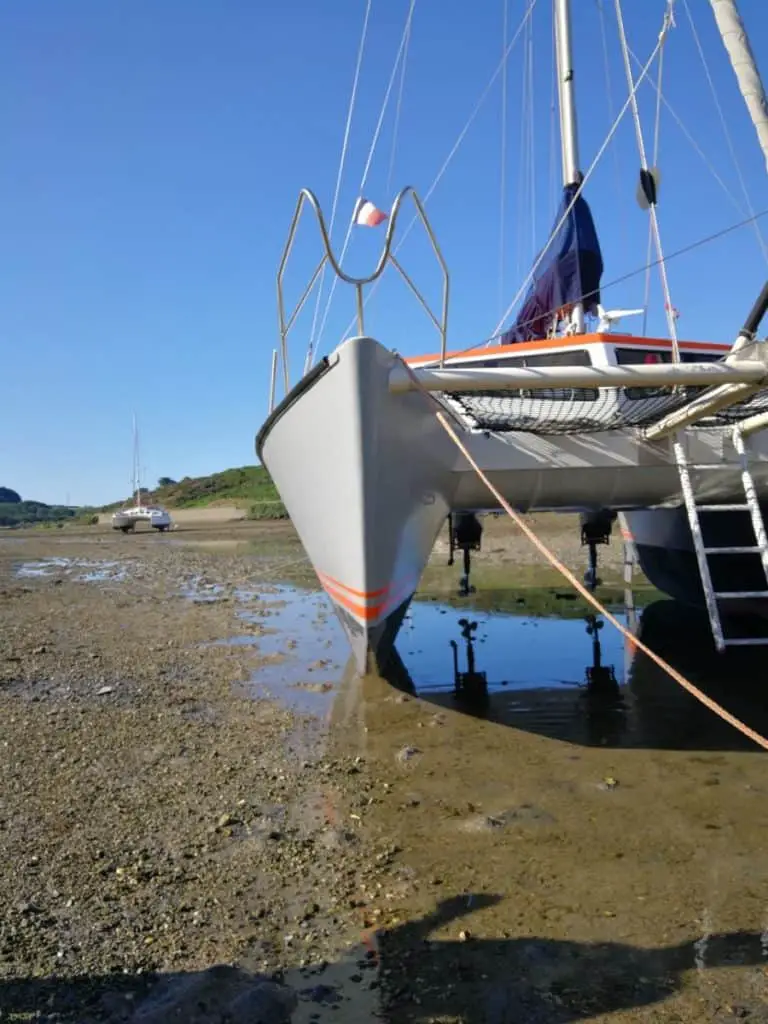
Boat specific maintenance.
3. Sailboat Maintenance Can Be Challenging
With a lot of car-related maintenance, a lot of people are able to handle basic fixes themselves. For example, they know how to change the coolant in their car, then they are also able to do the same with their boat engine.
However, with sailboat-specific maintenance, there’s a lesser chance that you’ll know what to do. This means that if you notice anything out of place, you might have to call in professional help, something that rarely is available when traveling the oceans.
Additionally, some parts of your craft will have to be replaced frequently. For example, your sails will need to be replaced after 4000 hours of use even if they aren’t showing significant damage.
Even with the best-maintained craft, there’s always the possibility that something may be missed. An overlooked issue – or simply human error – can cause a breakdown while you’re in the ocean.
When I did my first gulf stream crossing from Miami to Bimini, just before landfall I lost the steering capability of our boat and we started drifting towards reefs. Later we found out that if we had only tightened the steering chain tensioner this would never have been an issue.
Gabo
This is a good example of boat-specific problems, I had the previous technical knowledge from being a car technician, but I lacked the boat-specific experience to know that the steering chain needed to be checked before leaving the dock.
While breakdowns are not inherently dangerous, they are another factor that can make sailing time-consuming. Unlike driving a car, you cannot rely on another vehicle to help you out or call the tow truck. You’ll have to contact a dedicated boat towing service, and they’ll take time getting to your location – during which time you’ll have to wait at sea, doing nothing.
4. Sailing Is Exhausting and Requires Your Complete Attention
Because sailing is so heavily dependent on the wind, it requires you to pay full attention to what is happening on the boat. You’ll constantly need to make minor adjustments to ensure you stay on course and don’t damage your sails. You also need to be fully aware of the weather and remain prepared to change your plans.
Although much of this can be mitigated with autopilot and weather warning systems, this was the biggest surprise to me as a novice sailor. As mentioned above, I thought sailing would be 90% relaxing and 10% work, now, a little more experienced, I would say it is more like 60% work.
This can be stressful for some people, and if you’re the one captaining the ship, you may find that sailing is not as stress-free as you thought.
So why do I still want to sail?

Is Sailing Fun?
Despite the disadvantages mentioned above, I love sailing – and for good reason.
Sailing is a lot of fun, especially if you enjoy spending time outdoors and are looking for some time away from the hustle and bustle of urban life. It lets you spend time with yourself without worrying about being interrupted by last-minute work emergencies.
Sailing is one of the few places nowadays where you can be truly one with nature, where it’s only you and the wind and sun.
I used to be afraid of the sea, now it is my friend.
What Makes Sailing Fun?
Sailing allows you to enjoy the ocean without a loud motor disturbing you. Learning how to harvest the energy of the wind to propel you around the world can be extremely fulfilling. The opportunity to work together as a team with friends and family should not be underrated!
Once you reach a secluded point, you can stop your craft, lay back, and relax. It’s especially great if you’ve got passengers along, as you can spend time with your loved ones.
Sailing takes you back to the basics, the tasks are simple but very rewarding. Raise your mainsail and off the boat goes, no emails, no difficult taxes to be done, just basic physics.

What Are the Benefits of Sailing?
We’ve discussed the downsides of sailing – but I wouldn’t have dedicated an entire website to something that I didn’t find beneficial! I believe that:
The upsides of sailing include improving your physical and mental health and relieving stress. It can also help train your concentration and spatial awareness.
As mentioned above, sailing can be a physical activity, allowing you to get a full-body workout when you’re out in the ocean. You’ll have to work with the sails and the ropes, which can help you develop your muscles and improve your cardiovascular health.
Additionally, being out in the ocean ensures you get a full dose of vitamin D from the sunlight. Vitamin D is crucial to your body in several ways, including helping you keep your bones and teeth healthy.
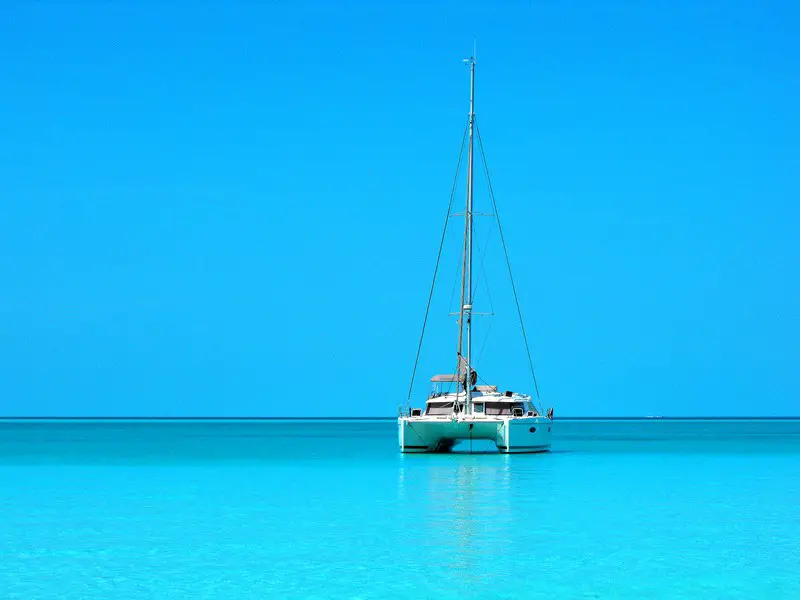
The privacy of sailing and lack of loud noises can help you relax and destress, which boosts your mental well-being. Nature sounds, including ocean sounds, have been shown to have mental health benefits, and sailing allows you to spend time in the ocean.
At the same time, you need to be alert while sailing so you can make adjustments as required. This helps train your concentration. Another aspect of sailing is navigation and planning on a map effectively, and learning how to do this helps raise your spatial awareness.
Final Thoughts
Sailing is an enormously fun activity, but it’s not without its downsides. It’s expensive, time-consuming, and requires you to be more focused than you may want from a recreational activity.
At the same time, it helps boost mental and physical health and improves concentration and spatial awareness. Many people enjoy themselves thoroughly while out on the ocean, and it allows you the personal satisfaction that comes with learning a new skill.


